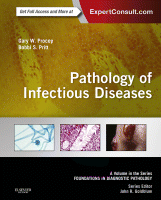Physical Address
304 North Cardinal St.
Dorchester Center, MA 02124

You’re Reading a Preview Become a Clinical Tree membership for Full access and enjoy Unlimited articles Become membership If you are a member. Log in here

Introduction A variety of common and uncommon structures may be identified in histologic and cytologic preparations that bear a striking resemblance to parasites, fungi, bacteria, or viral cytopathic changes. These infectious mimics may confuse the examiner and thus lead to…

Introduction The protozoa that infect humans encompass a vast spectrum of organisms from several different phyla. Although all are eukaryotic, single-celled, microscopic, and nonphotosynthetic, they exhibit diverse life cycles, means of infectivity, types of motility, pathogenicity, and location within the…

Introduction Helminthic infections comprise a great variety of worms that parasitize virtually every organ in the human body. Although helminthic infections occur throughout the world, they are more common in the subtropics and tropics. This is usually related to climatic…

Introduction Yeasts and yeastlike fungi are commonly encountered in human tissue specimens from patients with fungal infections. Alterations in normal anatomy, due to the presence of indwelling catheters, and alterations in normal microbiota, which occur with antibiotic use, provide opportunities…

Introduction The term dematiaceous is used to describe fungi that are dark in coloration, typically olive colored, dark brown, or black, due to the presence of melanin or melanin-like pigment. The dematiaceous fungi are a large and diverse group and…

Introduction A reclassification of the phylum Zygomycota into the phylum Glomeromycota has been proposed based on molecular phylogenetic studies. Acceptance of this reclassification would change the class name, Zygomycetes, to the new class of Glomerulomycetes. Instead of zygomycetes causing zygomycosis,…

Introduction Hyalohyphomycosis is fungal disease caused by a variety of molds that produce hyaline, septate hyphae with narrow hyphae that range from 2 to 6 μm in diameter. These include Aspergillus species, Fusarium species, Scedosporium species, and others. Zygomycete hyphae…

Introduction Mycobacterium ulcerans infection, commonly called Buruli ulcer (BU), is an indolent, necrotizing disease largely limited to skin and subcutaneous tissue, but it may disseminate to lymph nodes and bone. Molecular studies suggest that M. ulcerans diverged from Mycobacterium marinum…

Introduction Clinical Features Prevalence Globally, approximately 200,000 new cases of leprosy are diagnosed annually, according to figures available from the World Health Organization, based on passive case reporting. Active case-finding surveys, however, indicate that the actual number is likely to…